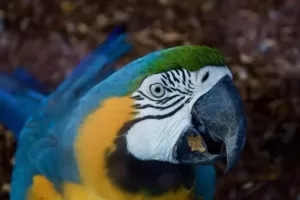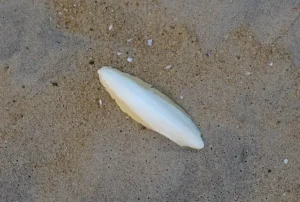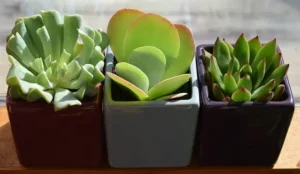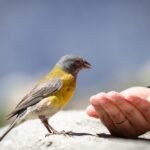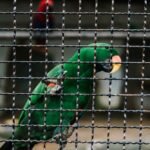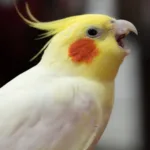A female parrot can start laying eggs when it reaches sexual maturity. Small Parrots like the Budgies and Cockatiels mature at about 1 year of age, while medium-sized parrots achieve maturity between 1 to 2 years. Larger Parrots usually reach full maturity anywhere from 3 to 6 years of age.
In the wild, mature parrots start laying eggs when the breeding season arrives. However, in the case of captivity, reaching sexual maturity does not necessarily mean that the parrot will start laying eggs.
Egg laying in captive parrots is not predictable due to less variability in seasons and living conditions. Some parrots may lay eggs shortly after maturity, while others may not start laying eggs until they are halfway through their lifespan. Most captive parrots do not lay eggs unless they are intentionally set up for breeding.
If a parrot is showing mating behaviors, it means that it has been triggered hormonally. However because the environment in our homes is favorable for breeding activity year-round, the parrot may not stop laying eggs, which can be problematic.
Quick Navigation
Can Male Parrots Lay Eggs?
Male parrots cannot lay eggs because they do not have the reproductive organs required for egg formation. Only female parrots can lay eggs. However, a male parrot needs to mate with a female parrot to fertilize the egg.
Can Female Parrots Lay Eggs Without A Mate?
Female parrots are capable of laying eggs on their own. However, the eggs laid by a single female parrot are infertile, meaning they do not hatch into baby chicks. In order for the female parrot to lay fertile eggs it needs to mate with a male.
When Do Parrots Stop Laying Eggs?
Parrots do not go through a menopausal period. A healthy parrot may continue to go into reproduction cycles even in its senior years. However, they may go through hormonal changes as they get older. According to Zoo Biology
How Often Do Parrots Lay Eggs?
Most wild parrots lay eggs once a year which is during the breeding season. The time of the breeding season can vary depending on where the species comes from. However, for captive parrots the pattern of egg-laying is unpredictable.
Parrots kept in captivity do not experience seasonal variations to trigger hormonal behavior. But if they notice a change in their living conditions, they can get hormonal.
Hormonal behavior in parrots is more commonly seen during the winter months because the indoors are warmer compared to the rest of the months. This sends the parrot into hormonal mode and encourages them to breed.
Other times, when they have a free-flowing supply of food, and the temperatures are consistently warm, parrots are not triggered to lay eggs.
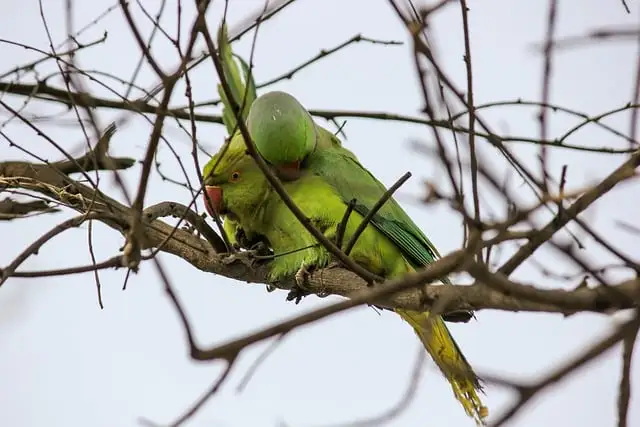
How Many Eggs Do Parrots Lay?
The number of eggs a parrot lays in a clutch depends on its species and its size. Generally, the smaller parrots have bigger clutches. Large parrots lay a clutch of 2-3 eggs, whereas small parrots lay 4-6 eggs.
How Many Eggs Does A Parrot Lay At One Time?
A parrot will only lay one egg at a time. The time between each egg is laid can vary depending on its gestation period. Small parrots usually lay a clutch of eggs with one day between each egg. However, larger parrots may take up to two days to lay the next egg.
How Long Is A Parrot Pregnant For?
According to the Handbook of Avian Medicine, a parrot’s egg takes around 48 hours to form and spends 80% of this time in the uterus, also called the shell gland. In a parrot’s reproductive system, eggs are formed in the ovary and then travel down the oviduct to the uterus, where they receive their shell before being laid.
How Long Do Parrot Eggs Take To Hatch?
Parrot eggs take between 2 – 4 weeks to hatch, depending on the species. The incubation period is generally longer for larger parrots. It also depends on the clutch size because if it is a breeding pair, it may not start sitting on the eggs until the whole clutch is laid.
How To Prevent Egg-Laying In Parrots?
reproductive during a certain time of the year; just when depends on their location and other factors. Some birds, like chickens and cockatiels, are light dependent, meaning that increasing light (as the days lengthen) stimulates their reproductive hormones.
Limit Exposure To Light
Since most parrots come from equatorial regions, they get about 12 hours of both light and dark consistently. But when they’re housed indoors, they often get exposed to more light because we tend to turn on the lights when it gets dark outside. So even when the days are shorter, parrots do not experience less light.
The increased light can make the parrot’s brain believe that the days are actually longer and make them ready to breed. This is why you should put your parrot to bed at the same time every night. Also, you should limit their exposure to artificial lights such as lamps and television.
Dietary Changes
When there is an abundance of fresh food, it is a clear signal for the parrots that it is a good time to breed and raise chicks.
So in order to deter your parrots from thinking that it is the breeding season, you need to limit the variety of fresh foods you offer and also make their meals sparse throughout the day.
Their diet should consist of pellets and green leafy vegetables. Avoid offering any food that is high in calories such as seeds and nuts.
However, if your parrot has already started laying eggs, it is crucial the keep their calcium levels up. Calcium is important for eggshell formation. Frequent egg-laying can lead to calcium being drawn from the bird’s bones and other bodily stores.
This can weaken the parrot’s bones and increase the risk of fractures and other health problems. Therefore, it’s important to provide a balanced diet rich in calcium.
Remove Nesting Material
The presence of nesting materials can stimulate a parrot’s natural instincts to build a nest and signal that the environment is suitable for breeding.
It may lead to a hormonal state in which the parrot shows aggressive behavior, becomes territorial, and prepares for egg-laying.
You should remove any kind of nesting box or a small space that it can nest inside. Chewing sand shredding newspaper can also make a parrot want to breed.
Relocate Their Cage Often
Parrots can believe that their cage is ideal for nesting and laying eggs because it does not change. They also find food and water there at all times. So if you move your parrot’s cage often, it will make them think that it is not ideal for egg laying.
Limit Petting To The Head
Petting anywhere other than your parrot’s head can stimulate it sexually. You should avoid touching your parrot on the back, stomach, and especially the cloacal region. This can make its hormones active and it may start rubbing its vent on you and other things in its cage.
Remove Inappropriate Toys From The Cage
If a parrot is hormonal and does not have a mate, it can get sexually frustrated. It may start masturbating using one of its toys. It is usually the one that the parrot is bonded to. So if you parrot showing inappropriate behavior with a toy, you should remove it.
